Fortnite building guide: How to build with materials and traps in Fortnite
From the basics to complex structures, how to use materials and traps to build in Fortnite.
Fortnite building is a skill that's worth learning if you want to compete at the higher levels of the game.
Though finding top-tier weapons and loot is the most important task in the game - since the goal is to rack up as many kills as you can - mastering the assembly of structures and walls is a skill that will definitely save your skin in combat and improve your chances of obtaining a coveted Victory Royale.
If you're new to building, this article contains everything you need to know, from the ins and outs of how to build, to the best structures to construct in certain situations.
Latest update (July 23rd): Material strengths have been slightly adjusted, meaning the health and build time of certain elements might not be what you're used to. Read the relevant section for more!
On this page:
- How to build in Fortnite and get your building controls right
- Fortnite materials explained, from differences to sources
- How to build structures in Fortnite
- Fortnite Traps and other objects explained
- How to build specific walls, floors, stairs and roofs in Fortnite
- Everything else you need to know about building in Fortnite
How to build in Fortnite and get your building controls right
There are four building types available in Fortnite: walls, floors, roofs and stairs, all of which can be manipulated and modified to build almost anything you can think of. The fifth type, the Trap, can be collected as loot during a match.

Whether playing on PC, console or mobile, there are dedicated build controls - defaulting as Q on a keyboard, or B on Xbox / Circle on PlayStation - but getting your control scheme and settings in order first is important.
Regardless of what platform you're playing on, if you're using a controller then the first thing you're going to want to do once you've mastered the basics of building is to switch over to 'Builder Pro' control layout, which can be done by going to Settings > Wireless Controller > Configuration.
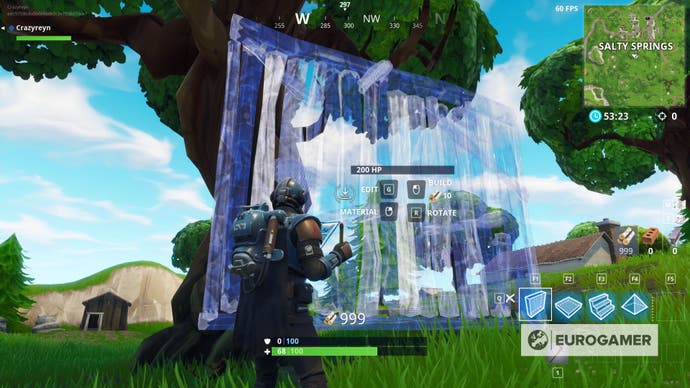
Builder Pro is vital for builders because it speeds up building times greatly as structure types are set to a face button and materials are selected using the D-Pad instead of making you cycle through various building menus. The new layout can take a bit of getting used to, but once you've become accustomed to it, you'll find that it gives you an edge over opponents who aren't using it during combat as it allows for a speedier build output.
Additionally, it's worth hopping into the game settings and turning out two things if they aren't already active - Turbo Building and Automatic Material Swapping. The former allows you to hold down the fire button to continue to build items quickly ('painting' them around you), while the latter means if you run out of a material, it'll jump to the next available. Both are great during a firefight, when you're more concerned with getting something constructed than what it's made of and the exact composition.
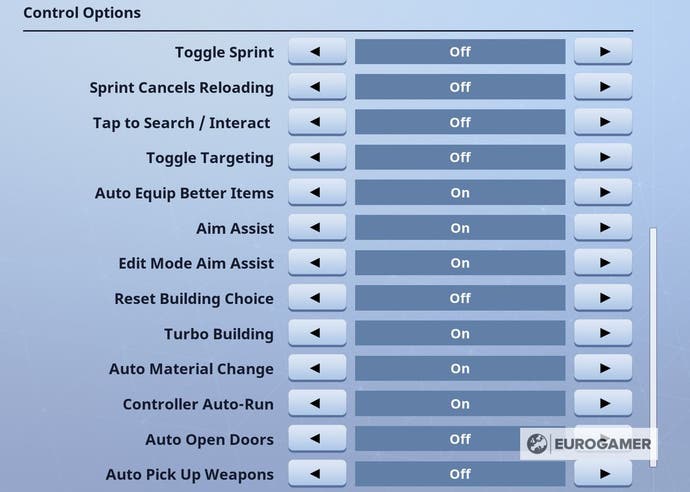
Finally, as well as simple walls and floors, you can specifically edit them before they are placed, creating more detailed structures. You do this by pressing the specific button prompt when the building blueprint appears. This is to create specific types of buildings that are more aesthetically pleasing, say in Playground LTM mode, since you won't be concerned with it in a firefight, and we go through all these specific types later in the article.

If you want to practice building - without the use of a third-party Fortnite building simulator - then the best way is to wait until the Playground mode is available. This gives you huge amounts of materials and a map devoid of enemies to mess around with freely, allowing you to experiment with building with no pressure.
It's a Limited Time Mode, however, but based on the current rollout of the mode, it'll likely feature once more month, so if you're missed it, it'll likely be back around sooner than you think!
Fortnite materials explained, from differences to sources
There are three types of materials which can then be used to build, with each type of material having its own separate build time and health:

- Wood: five-second build time per panel, starting health at 100, has 200 health
- Stone: 12-second build time per panel, starting health at 90, has 300 health
- Metal: 20-second build time per panel, starting health at 80, has 400 health
Destroying things like brick walls, trees, rocks and cars will get you the respective material. You can also find them wherever you find loot - such as out in the open or in chests. The fastest way to accumulate loot in a match is by killing other players, allowing you to collect their materials when you run over their dropped items.
It's a good idea to learn what materials work best in different situations and build to your advantage. For example, wooden structures are the quickest to construct but are the weakest against enemy fire so it wouldn't be wise to use it over a stronger material when you're in a final circle, and using metal during the early stages of a match when you're constantly shifting due to circle shrinkage would just be a waste.
Be careful, though, as the longer the build time, the bigger the window for opponents to shoot down your panels so if you're engaged in a small one-on-one battle, we recommend that you use wood to build a small defense system as it's quicker to replace.
Use stone and metal to build a larger fort during the later stages of the game so you've got somewhere that's more reinforced to camp out in, plus being higher up increases your chance of landing deadly headshots. Just remember to reinforce the base of any high towers you build as opponents will often try and topple your structure from the bottom up.
How to build structures in Fortnite
Once you're familiar with building materials and types, you're ready to construct yourself some actual structures. Whilst you can build almost anything you can think of in the game, it pays to know some specific structures and builds that give you the edge in certain situations.
Panic wall
You'll probably encounter opponents who scramble to throw up the famous 'panic wall' during combat encounters several times throughout a single match. Depending on build material. they're great for getting a couple of extra seconds to hide so that you can either reload, heal up or run in the opposite direction during a fight. To build one, simply construct a standard wall.
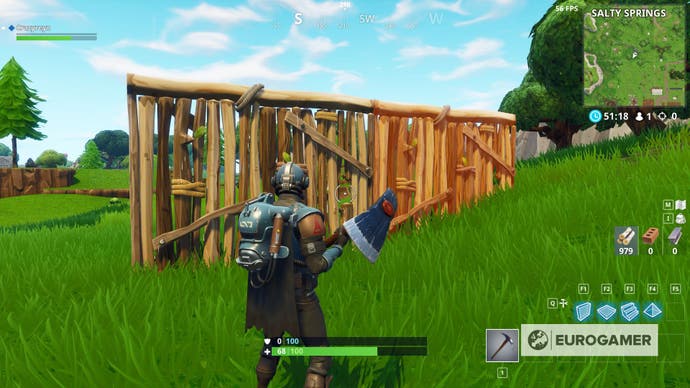
Panic ramp
Similar to panic walls in that players often quickly build them during close-combat, panic ramps are fantastic for getting up higher than your opponent and implementing a surprise attack by dropping down on top of them.
Due to the slope, you can dip in and out of enemy sights by moving up and down the ramp, giving you added protection. If your foe is further away, panic ramps also make for an excellent sniping spot due to the added height. You can construct one by building three standard walls in an upside-down U shape and then placing a set of standard stairs between them.
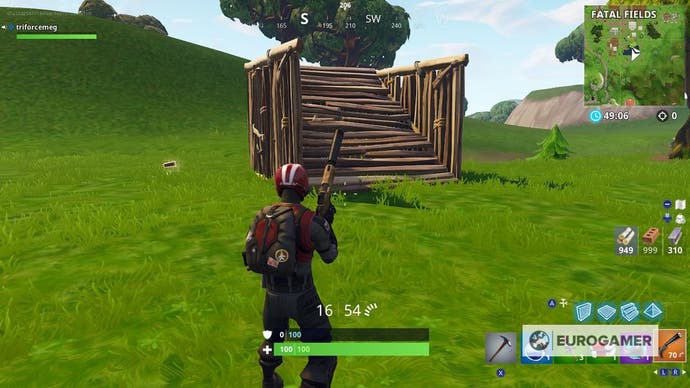
V-shaped ramp
V-shaped ramps are similar to panic ramps except they consist of two sets of stairs instead of one, making the 'V' shape. They're best placed at the very top of a tower as you can move up and down the ramps on either side as needed and are a great vantage spot to look out and to snipe from. Build one by constructing two panic ramps opposite each other.
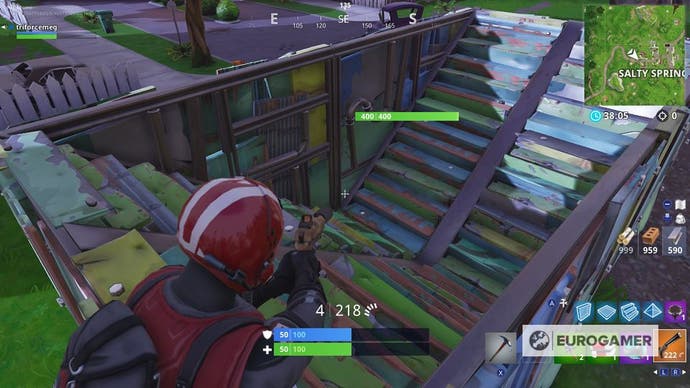
Sniper tower
If you've got a good aim, building a sniper tower will be a big advantage to you during a game's final circles as you can camp out at the top of one and pick far away players off with headshots. Construct one by boxing yourself in with four standard walls (or more if you want a bigger space), then build a set of standard stairs and move up higher. Rinse and repeat. Make sure to build a v-shaped ramp at the top if you want to snipe.
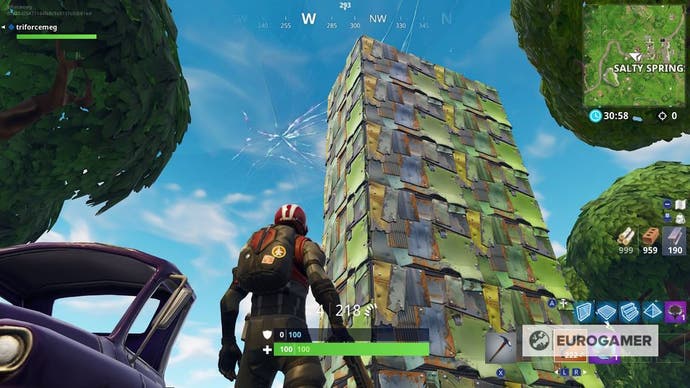
If you're more confident in your building abilities, you can even swap one of the bottom standard walls for a wall with a door and then place a trap in there, using the door to lure in unsuspecting players expecting to sneak in and kill you. Just remember to reinforce towers with stronger building materials at the bottom to lessen the chances of it being shot down and you falling to your death.
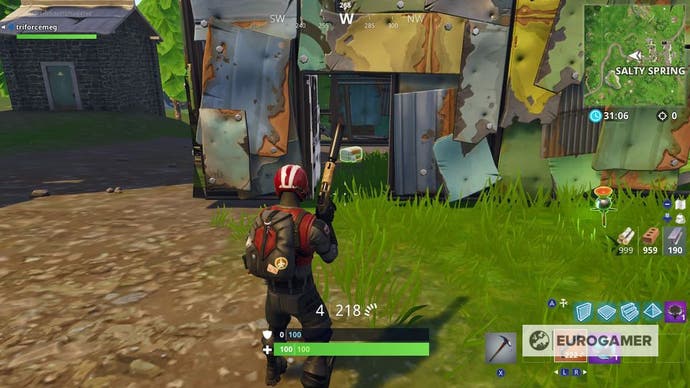
Healing room
Regardless of your ability, healing rooms should be something you incorporate into your play style as they give you an extra line of defence if you can't find a place to hide and heal up. To build one, surround yourself with four standard walls and then throw a roof over the top. They're pretty obvious to opponents and they'll more than likely try and shoot it down if they see one but at least you'll have nabbed yourself a few extra seconds to recover your health, improving your chances of survival.
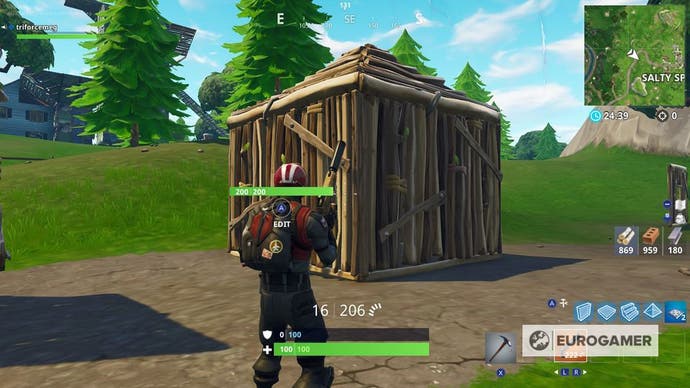
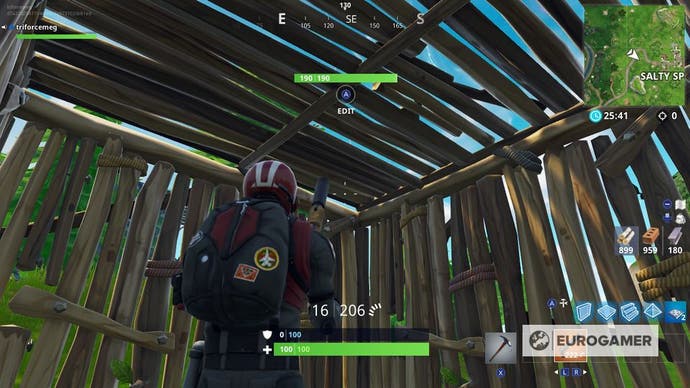
Fortnite Traps and other objects explained
Whilst building different structures is incredibly enjoyable in itself, adding objects such as traps to them cranks up the fun meter by 1000, especially when they result in silly and surprise.
Like other loot, objects and traps can be found all over the map, whether it's on the floor, in loot chests and llamas or in supply drops.
Launch Pad
The Launch Pad is an Epic rarity item that hurls you high into the air, allowing you to use your Glider to fly away quickly and easily from enemy attacks or to outrun the storm. In order to deploy the pad, you must place down a floor tile first - make sure you install it away from any trees or buildings that could obstruct your jump.
You can't move or pick it back up again once it's been planted and has unlimited uses meaning your opponents can use it too, so make sure you're strategic with its placement to avoid being followed and killed. If you've built a sniper tower, using a Launch Pad can be a great way to escape quickly into the air if it's being sabotaged by another player.
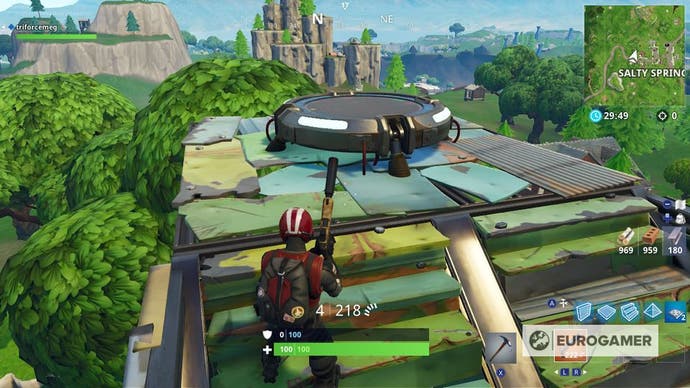
Damage Trap
There used to be three types of trap in the game: the Wall Zapper, Ceiling Zapper and the Retractable Floor Spikes, but they were removed and replaced with the Damage Trap, an Uncommon item which incorporates all three traps into one. Because of this, it switches its placement automatically between wall, floor and ceiling tiles.
The best way to use it is to place it somewhere such as inside the room of a house or the bottom of a fort, hoping an unsuspecting foe will accidentally stumble across it and meet their demise but more skilled players can actively box an enemy in with their own structure and place the trap with the enemy still inside for an easy kill.

Bouncer trap
The Bouncer Trap is an infinite-use Rare item used mainly by the player themselves to launch off of high places such as mountains or sniper towers as it negates fall damage. Whilst it doesn't deal any damage when stepped on, it can be used as an aid to kill enemy players when placed strategically as it can send them flying into Damage Traps or high enough into the air to get sniped by either you or other opponents.

Cozy Campfire
The Cozy Campfire is a one-use Rare "trap" used to heal up any surrounding players at a rate of 2HP per second for 25 seconds. Whilst the it isn't a damage-dealing item, it's useful when combined with a healing room structure if you either don't have any other healing items or multiple teammates need to recover health quickly.
Try and save it for the later circles where loot is more barren as there's nothing worse than running out of recovery items late in the game, especially if you're in a team and nobody has anything.
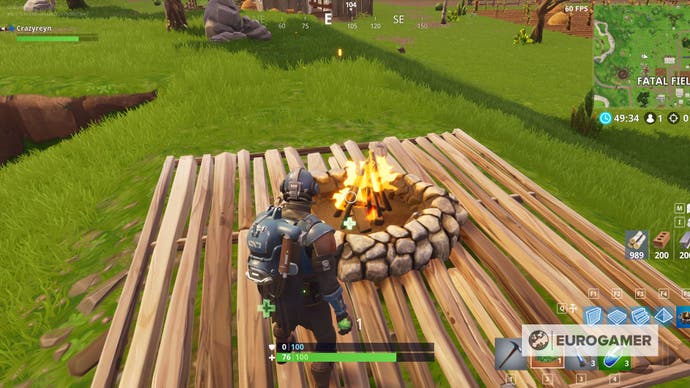
How to build specific walls, floors, stairs and roofs in Fortnite
If you want more advanced, specific types of structures, you can 'Edit' the wall or floor you are currently blurprinting, giving you a tile grid which you can then edit to create different structure types: walls and stairs consist of six squares (3x3) and roofs and floors contain four squares (2x2).
By removing tiles, you can manipulate the original structure into different forms, such as a wall with a center door or a set of U-turn stairs and you can edit any structure you build, regardless of form.
It takes a lot of practice to build different structure types quickly so make sure you hone your building skills before trying to create advance builds, especially during combat.
Building walls:
Building Floors:
Building stairs:
Building roofs:
Fortnite Chapter 5 Season 1 is here! It brings a free Lego Insider skin and redemption codes with it, along with a new Victory Umbrella. We've also got pages on new features like Medallions, Weapon Mods, and how to complete a Train Heist. Meanwhile, learn what the best weapons are in the current season, how to get XP fast, and what the best PC settings are to help earn a Victory Crown.
Everything else you need to know about building in Fortnite
As well as the essentials above, other things to know about building includes:
- Building doesn't have to always be used for defense, it can be used to get to high places to reach rare loot - such as inside the roof of a building - or to scout the map.
- You can also use building as an offensive tactic. Once you get good enough at building structures quickly, you can box your opponents in by building four walls and a ceiling around them. Have a trap handy? Use that while they are inside. Or if from the outside, chuck in a Stink Bomb. Otherwise, this is also a great way to escape a fight.
- Learning to build quickly can be the difference between escaping the storm and being eliminated early as you run for the final circle. Using materials to quickly scale mountains is essential if you are on the edge of the map.
- Always be aware of your surroundings when harvesting building materials as players can hear you from a long distance. It's best to harvest once you've killed your opponents and an area is cleared or if you are in a remote area of the map away from the circle. Also, be careful when mining cars for metal as it will set the car alarm off, notifying nearby foes of your presence.
- When harvesting materials, aim the pickaxe at the blue circle to mine faster. You'll hear an audio cue when you've hit the right spot.
- Getting good at building requires a lot of practice. Try landing away from other players in remote areas and focus on harvesting materials and building structures - or make use of modes like Playground LTM where the pressure from competing players is off.
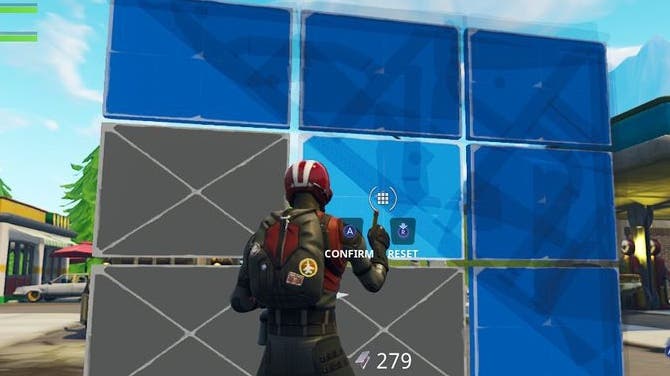
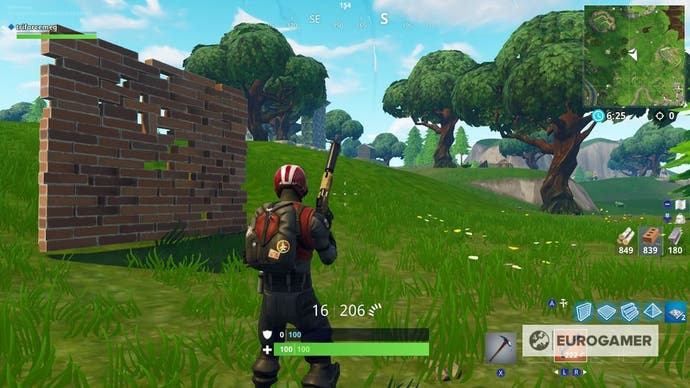


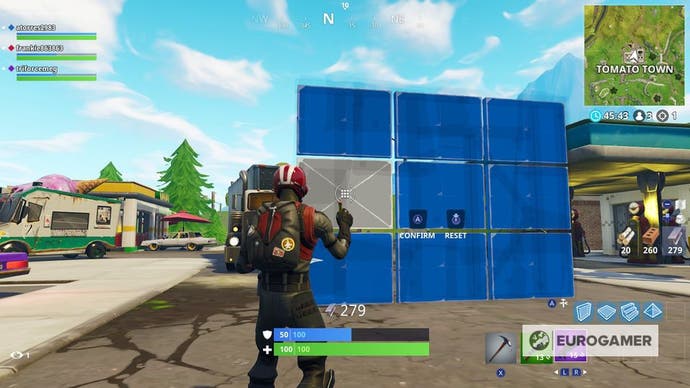
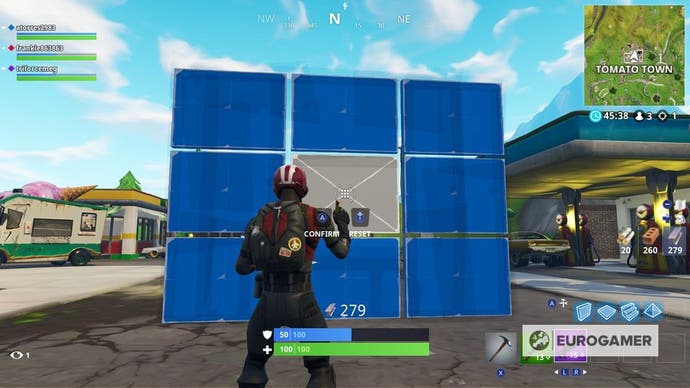
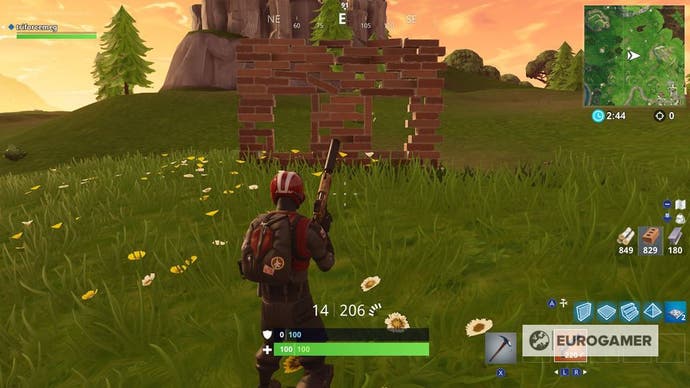
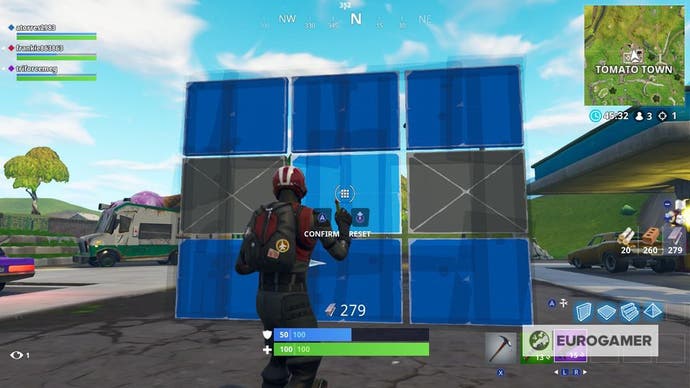

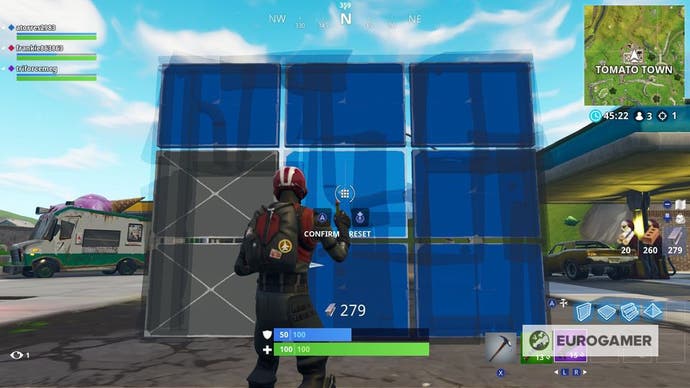
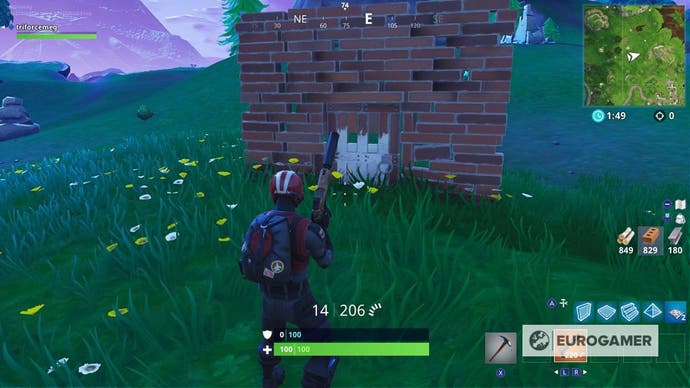

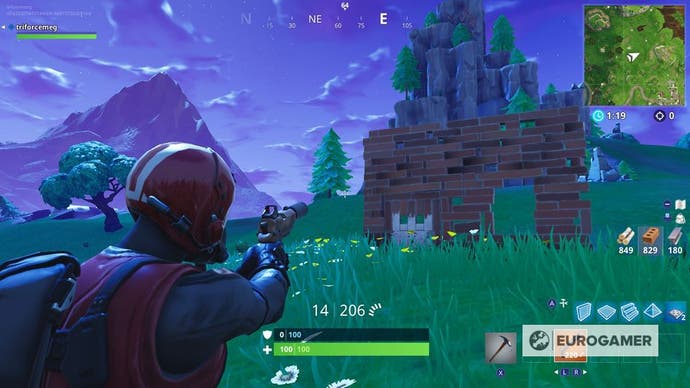

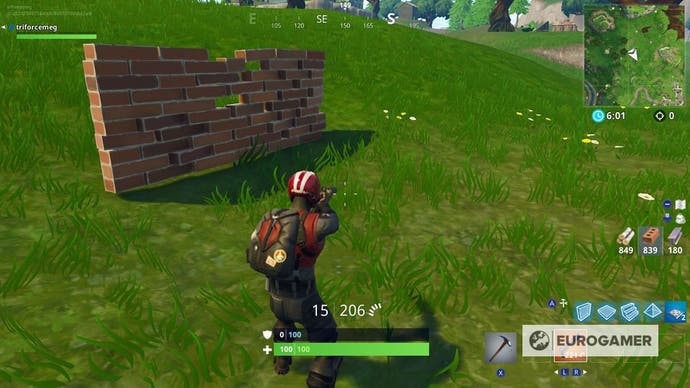
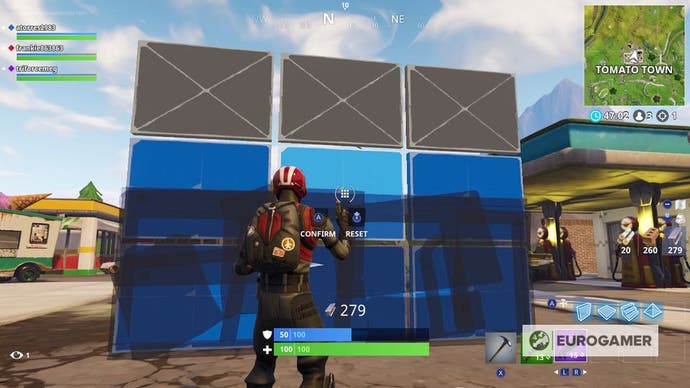
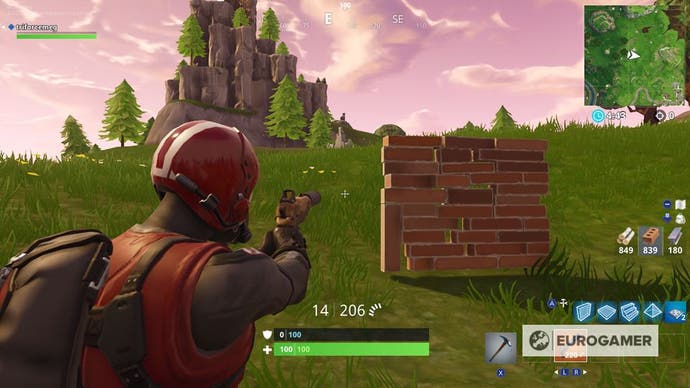

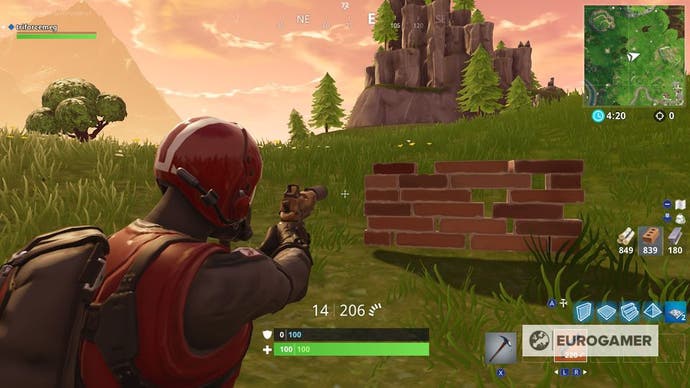
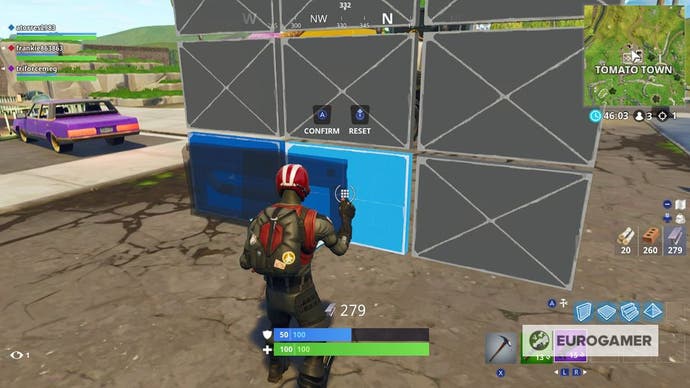
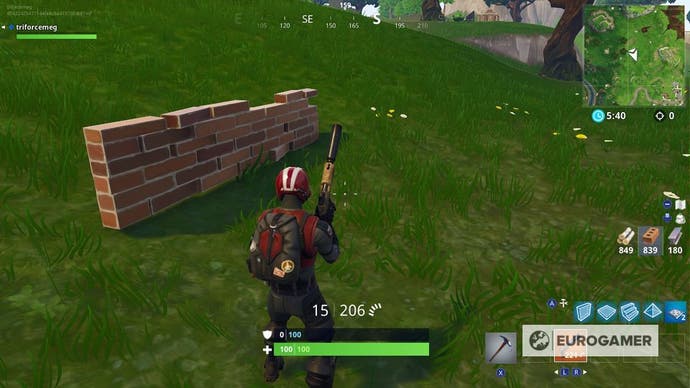
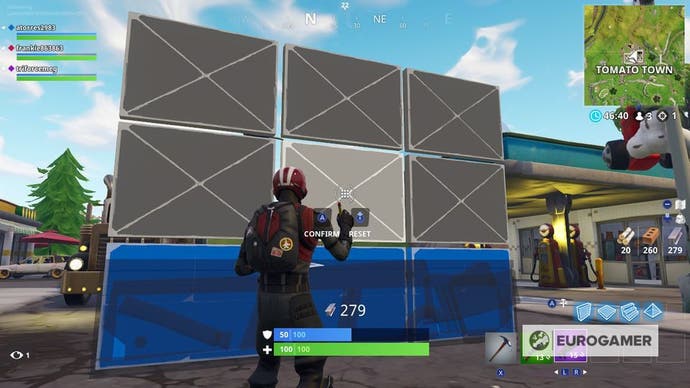
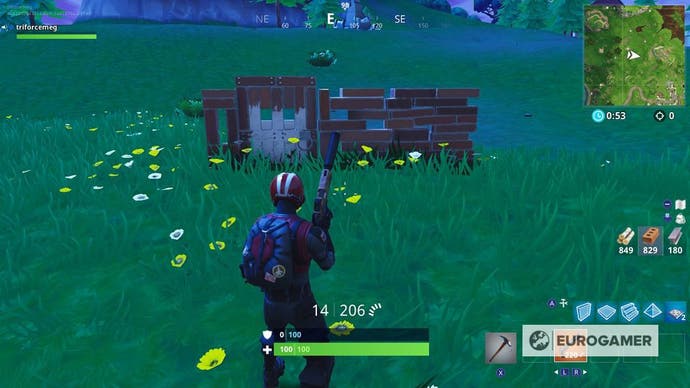
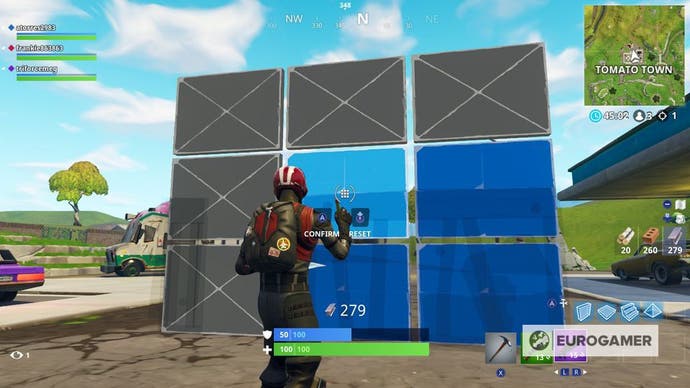
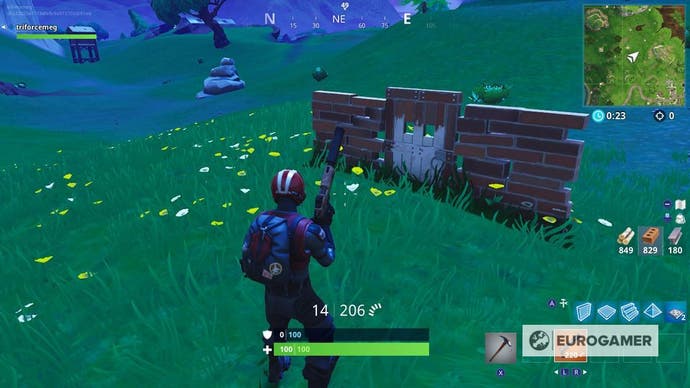
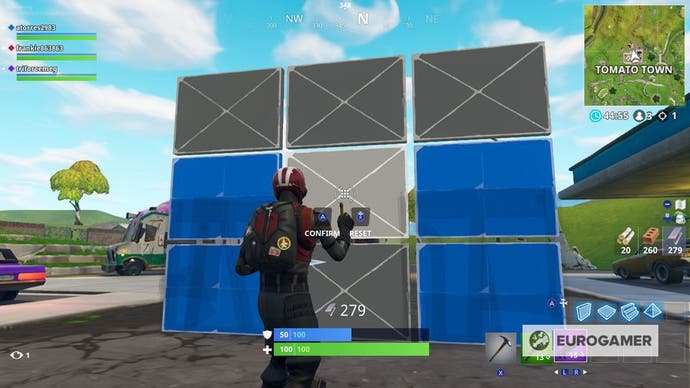

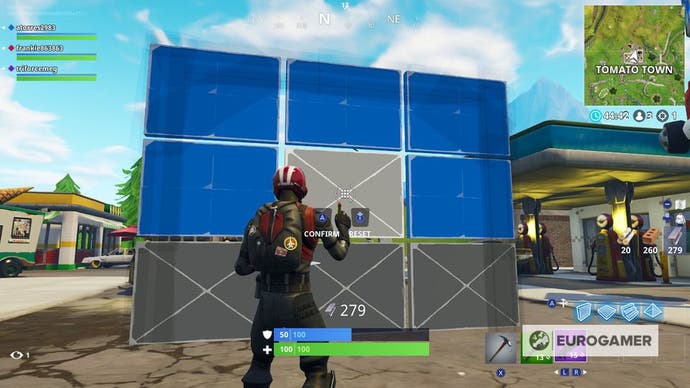
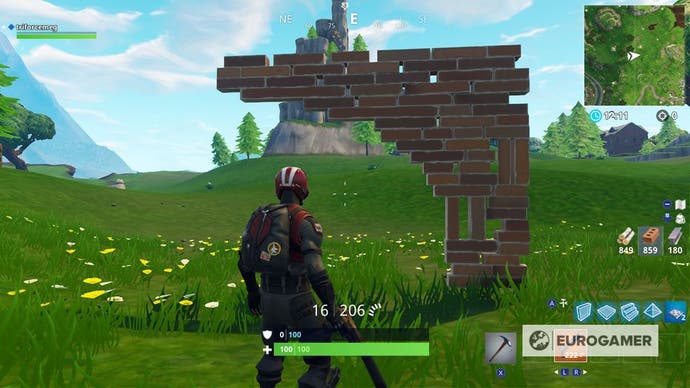

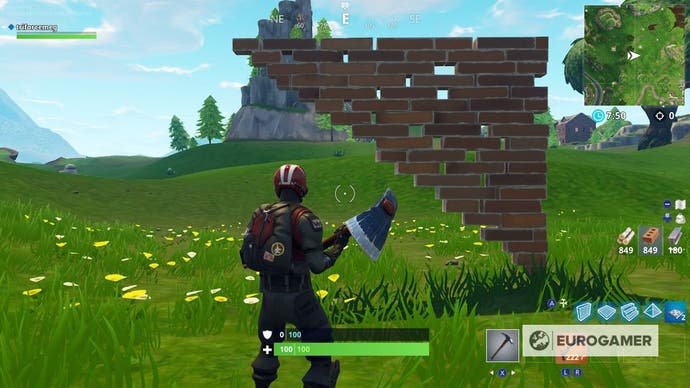
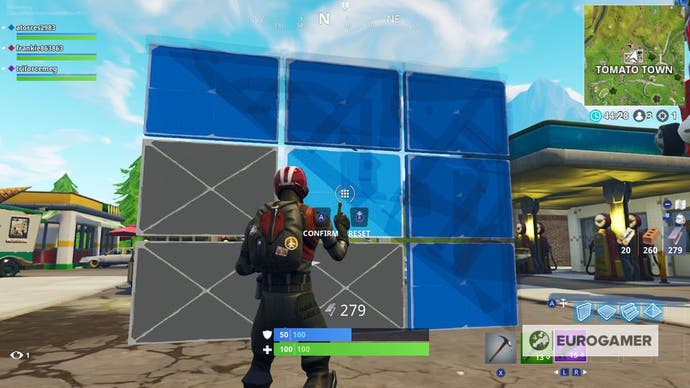

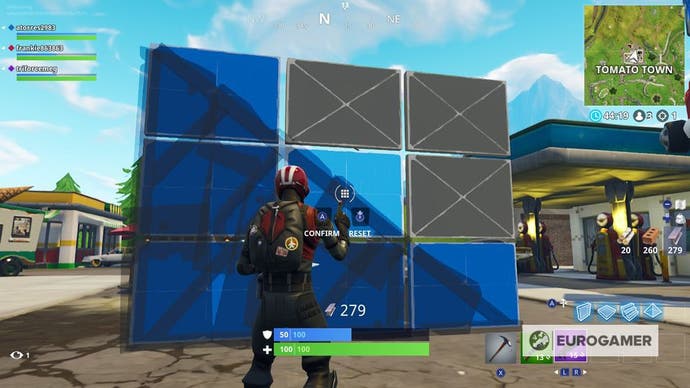
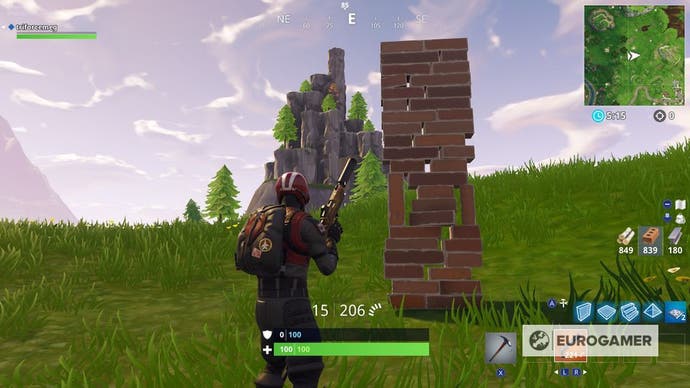

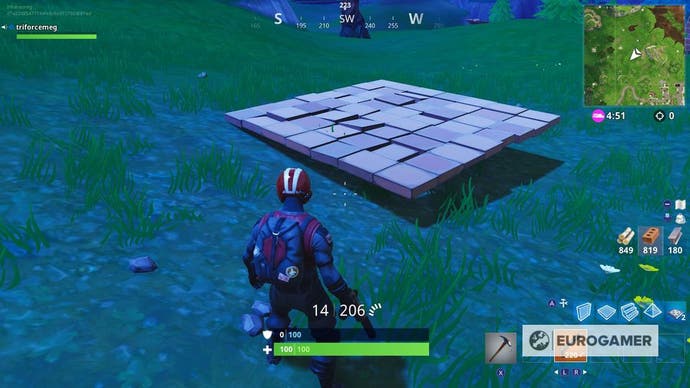

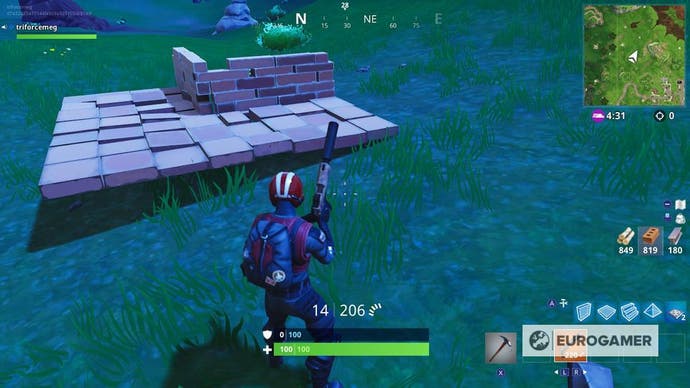


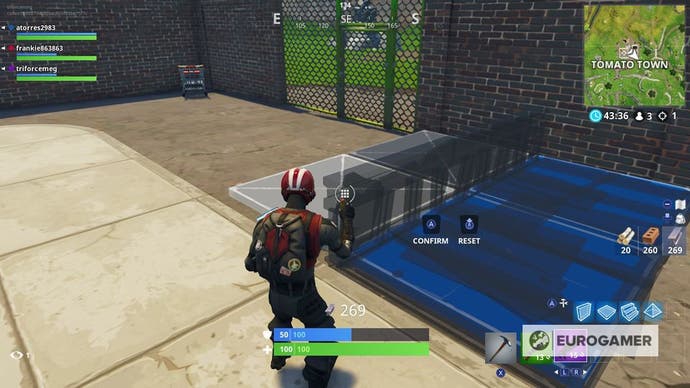
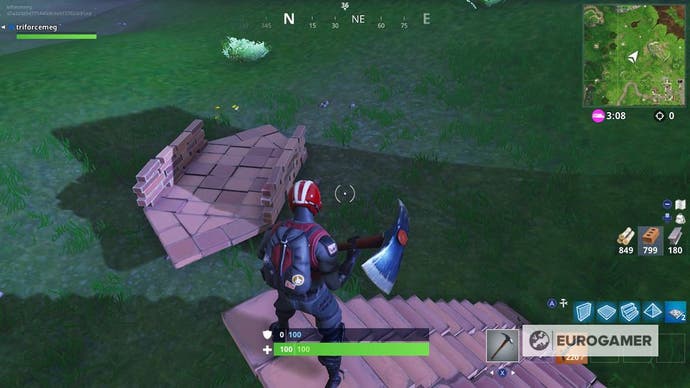

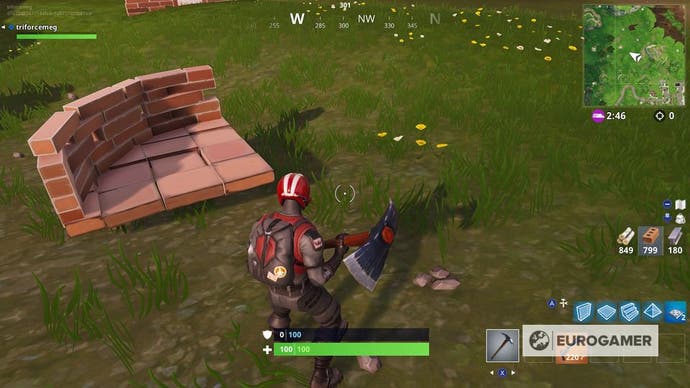
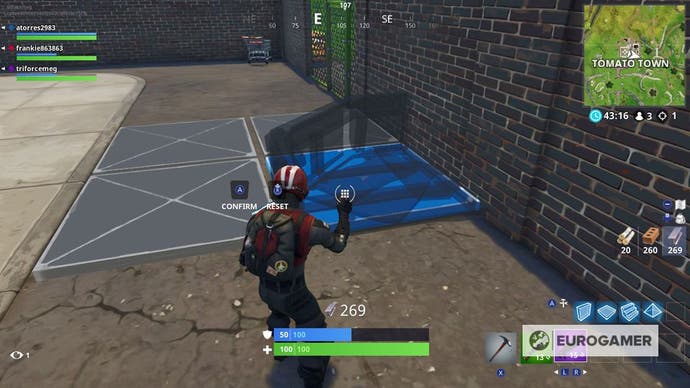

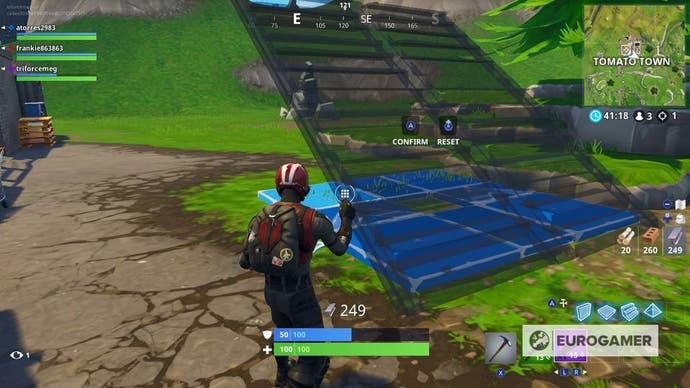
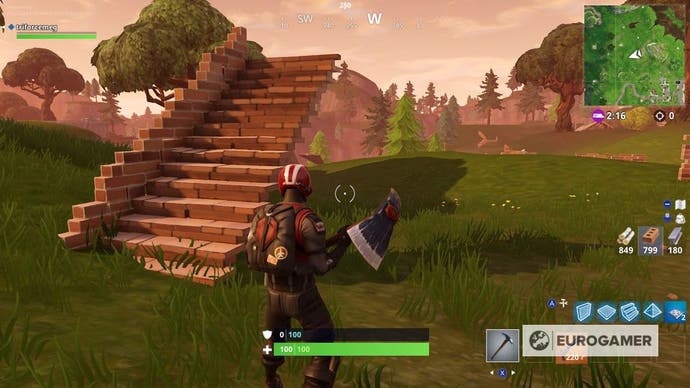

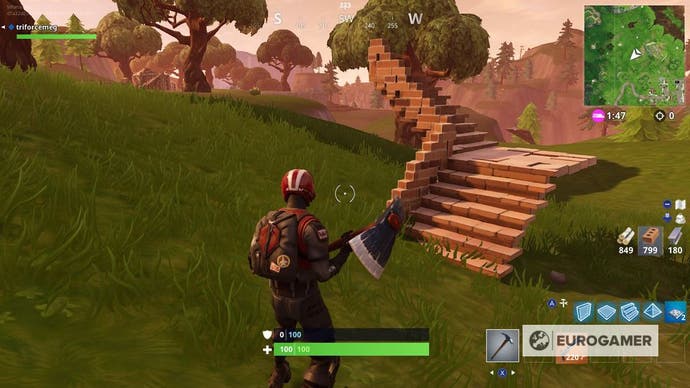
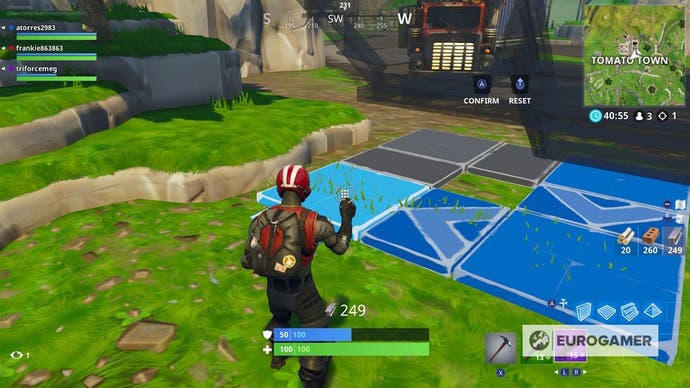
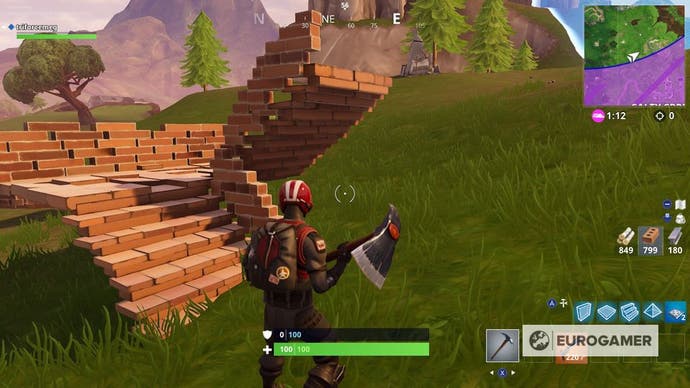

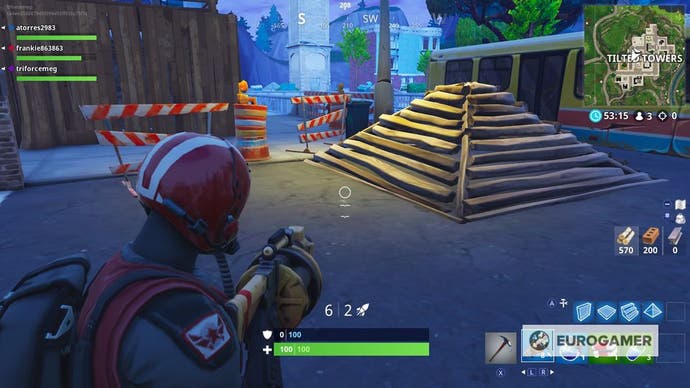


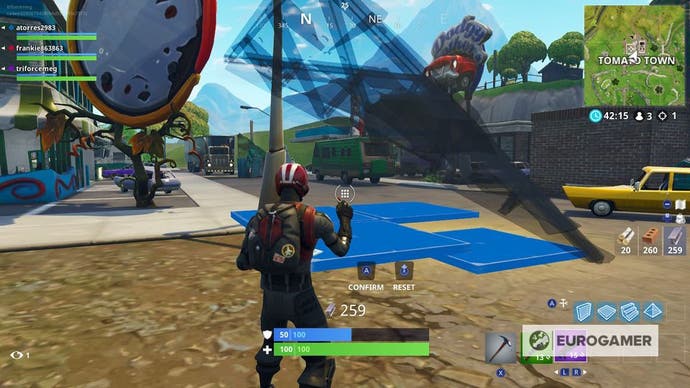
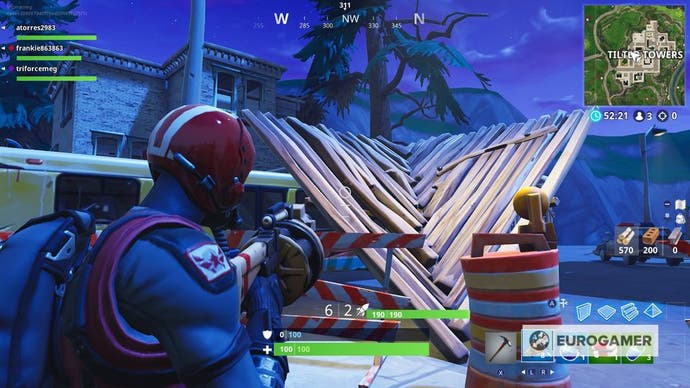
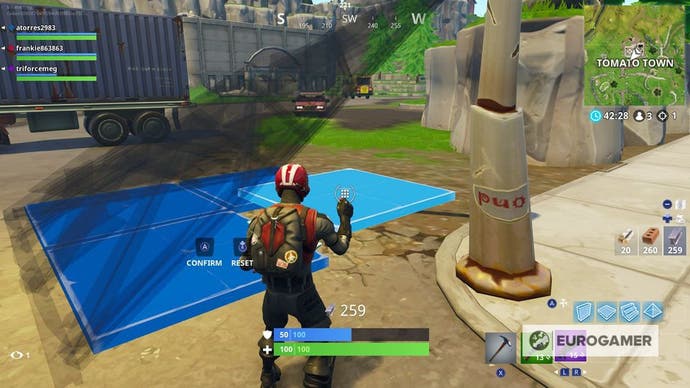
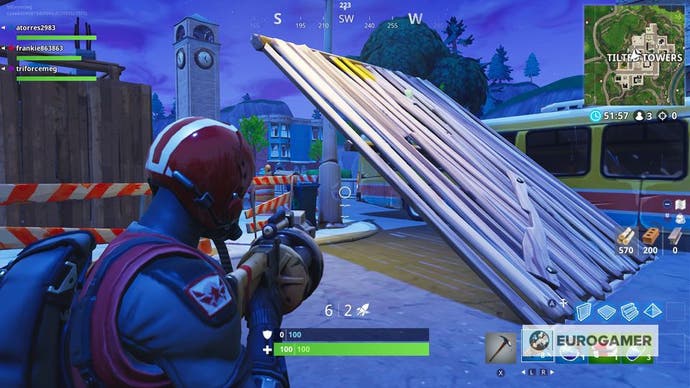
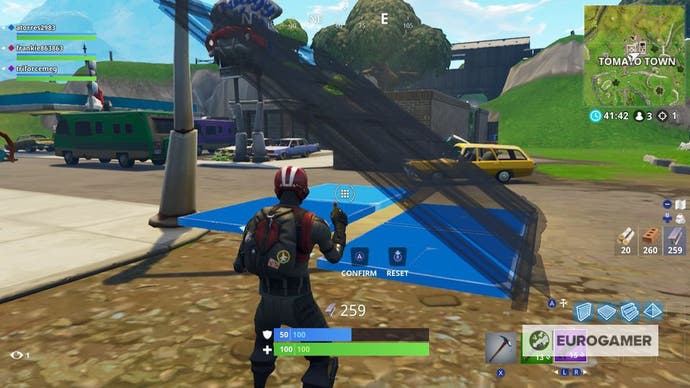
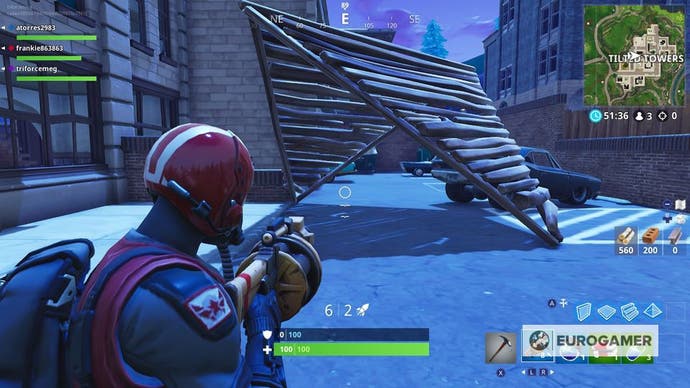

_Z5mtk2C.jpg?width=291&height=164&fit=crop&quality=80&format=jpg&auto=webp)





